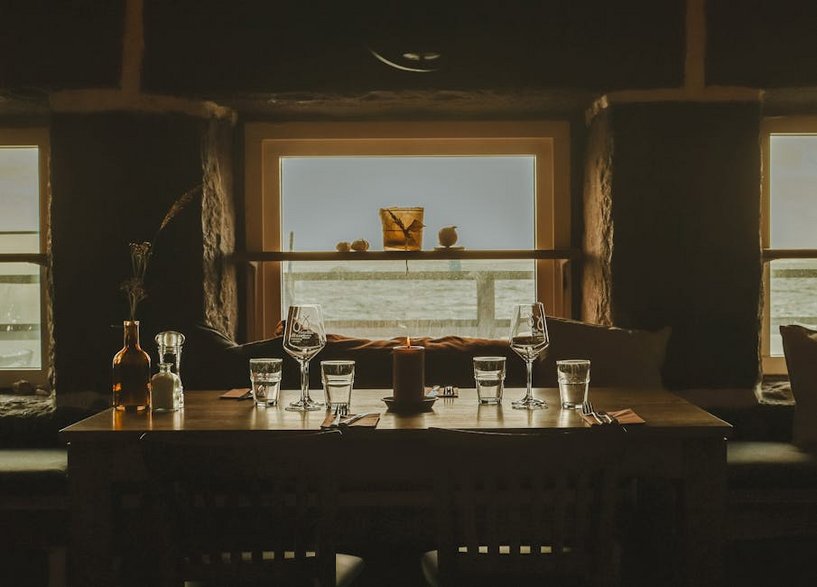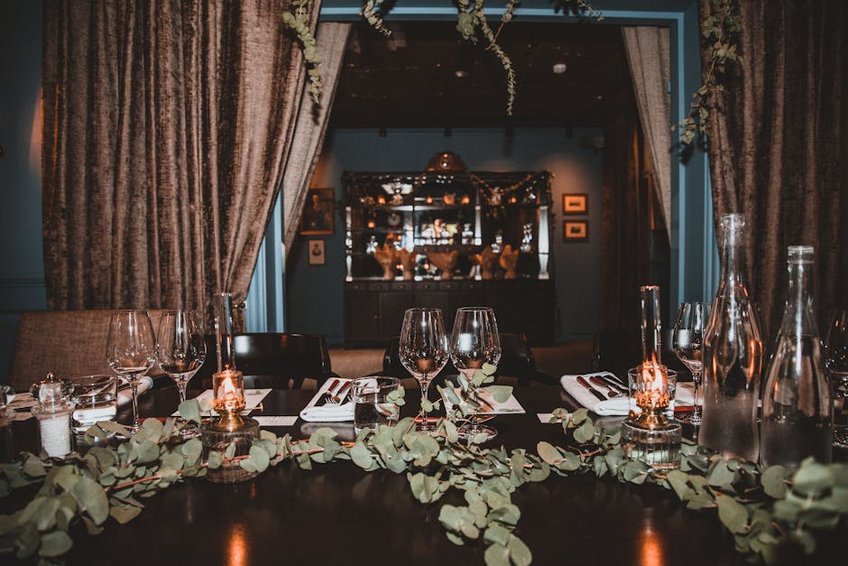Modern Culinary Experience in Sweden
Embarking on a modern culinary experience in Sweden means diving into a world where innovation meets tradition, where the purity of Nordic ingredients transforms into avant-garde masterpieces. This isn’t just about eating; it’s about engaging all your senses in a symphony of flavors that tell the story of Sweden’s landscapes, seasons, and cultural evolution. You’ll discover how Swedish chefs have redefined Scandinavian cuisine, moving far beyond meatballs and lingonberries to create a globally recognized food movement that emphasizes sustainability, foraging, and hyper-local sourcing. Whether you’re dining in a Michelin-starred restaurant in Stockholm or enjoying a modern take on street food in Gothenburg, the modern culinary experience in Sweden offers something extraordinary for every palate and budget. It’s a journey that will change how you think about food, nature, and the very act of dining itself.
Modern Culinary Experience in Sweden – Essential Information
Understanding the foundation of Sweden’s culinary revolution helps you appreciate what makes this experience so unique. The New Nordic Cuisine movement, sparked by the manifesto in 2003, fundamentally changed how Swedes approach food, emphasizing purity, simplicity, and freshness above all else. This philosophy means you’ll encounter dishes that change with the seasons, ingredients sourced from nearby forests and waters, and presentations that are as artistic as they are delicious. The modern culinary experience in Sweden isn’t confined to fancy restaurants either—you’ll find this ethos in food markets, cafes, and even food trucks across the country. Chefs here work closely with farmers, fishermen, and foragers to create menus that truly represent the terroir of each region, making every meal a genuine taste of Swedish nature and culture.
What Makes Swedish Modern Cuisine Unique
- Seasonal and local ingredients are paramount, with menus changing weekly based on what’s available from nearby producers and foragers
- Sustainability isn’t a buzzword but a core principle, with zero-waste kitchens and ethical sourcing practices being standard
- Traditional preservation methods like fermenting, pickling, and curing are reinvented with modern techniques and creativity
- Budget experience ($25-50 per meal): Food halls, modern cafes, and lunch specials at nicer restaurants
- Mid-range experience ($75-150 per meal): Innovative bistros, chef-driven restaurants, and tasting menus at emerging venues
- Luxury experience ($200-400+ per meal): Michelin-starred restaurants, extensive tasting menus with wine pairings
- Official Swedish Tourism Food & Drink Guide
- White Guide Nordic – Scandinavian Restaurant Guide
- Nordic Food Lab Research Organization
Key Principles of New Nordic Cuisine
The New Nordic Cuisine manifesto established clear guidelines that continue to shape Sweden’s food scene today. These principles emphasize purity, seasonality, ethics, and simplicity—but executed with incredible sophistication. You’ll notice that dishes let individual ingredients shine rather than hiding them behind heavy sauces or complex preparations. The focus on health and well-being means meals feel nourishing and balanced, often incorporating wild herbs, berries, and plants with known medicinal properties. This approach has created a distinctive culinary identity that’s both deeply rooted in Scandinavian traditions and boldly innovative, making Sweden one of Europe’s most exciting food destinations.

Modern Culinary Experience in Sweden – Planning Your Trip
Planning your culinary adventure in Sweden requires some strategic thinking to make the most of seasonal offerings and restaurant reservations. The Swedish dining scene operates with strong seasonal rhythms, meaning your experience will vary dramatically depending on whether you visit during the bright summer months or the cozy darkness of winter. You’ll want to research and book tables at popular restaurants well in advance—some Michelin-starred venues require reservations 3-4 months ahead. Don’t overlook the more casual dining options though, as Sweden’s food halls and modern cafes offer incredible quality at more accessible price points. Consider structuring your itinerary around specific food regions or themes, whether that’s seafood on the west coast, forest-to-table experiences in Småland, or innovative urban dining in Stockholm and Malmö.
Best Time to Visit for Food Experiences
Each season offers distinct culinary highlights that make timing your visit crucial for specific experiences. Summer (June-August) brings the legendary crayfish parties, fresh berries, and outdoor dining under the midnight sun. Autumn (September-November) features mushroom foraging, game season, and the harvest of root vegetables. Winter (December-February) offers cozy “hygge” dining experiences, Christmas markets with traditional treats, and the unique darkness that inspires intimate restaurant settings. Spring (March-May) brings the first fresh greens, asparagus season, and the return of lighter, brighter dishes after the heavy winter months. For the broadest range of experiences, late spring through early autumn provides the most variety and accessibility.
Budget Planning and Costs
Essential Preparation Checklist
Preparing for your Swedish culinary journey involves more than just making reservations. You’ll want to research restaurant policies—many higher-end establishments require prepayment or deposits for reservations. Pack comfortable walking shoes for exploring food markets and between meals. Learn a few basic Swedish food terms to enhance your experience (though English is widely spoken). Consider dietary restrictions in advance and communicate them when booking—Swedish chefs are typically very accommodating. Finally, embrace the Swedish concept of “lagom” (just the right amount) when planning your itinerary—don’t overbook yourself, leaving room for spontaneous discoveries and digestion between culinary experiences.
Modern Culinary Experience in Sweden – Top Restaurants and Dining
Sweden’s restaurant scene boasts an impressive collection of establishments that define the modern culinary experience, from world-renowned temples of gastronomy to innovative neighborhood spots. Stockholm alone has over a dozen Michelin-starred restaurants, while Gothenburg and Malmö continue to gain international recognition for their vibrant food cultures. What makes these places special isn’t just the technical excellence—it’s the storytelling through food, the connection to Swedish landscapes, and the constant innovation within Nordic traditions. You’ll find restaurants housed in everything from historic buildings to repindustrial spaces, each offering a unique atmosphere that complements the culinary philosophy. Whether you’re seeking the ultimate fine dining experience or creative casual eating, Sweden delivers with remarkable consistency and originality.
Must-See Culinary Destinations
Certain restaurants have become essential stops on any Swedish food pilgrimage. Frantzén in Stockholm, with its three Michelin stars, offers an unforgettable journey through Swedish ingredients with Japanese influences. In Gothenburg, Restaurant Bhong presents innovative Thai-Scandinavian fusion that has earned critical acclaim. Malmö’s Vollmers combines traditional techniques with modern creativity in a cozy setting. Beyond the cities, you’ll find gems like Daniel Berlin Krog in Skåne Tranås, where the remote location enhances the connection to local ingredients. These establishments represent the pinnacle of Sweden’s culinary innovation, but remember that reservations often need to be made months in advance, especially for weekend seating.
Hidden Gems and Local Favorites
Beyond the famous names, Sweden’s modern culinary experience thrives in less-known establishments that locals cherish. Stockholm’s Pelikan offers traditional Swedish classics reimagined with contemporary techniques in a historic beer hall setting. Gothenburg’s Familjen combines neighborhood bistro warmth with seriously good cooking using west coast ingredients. In the countryside, look for places like Salt & Sill on Klädesholmen island, where floating restaurants serve incredible seafood with water views. Food trucks have also embraced the New Nordic ethos, with operators like Street Gastro in Stockholm offering gourmet street food that rivals restaurant quality. These spots often provide more accessible pricing and availability while still delivering authentic modern Swedish cuisine.
Modern Culinary Experience in Sweden – Practical Travel Information
Navigating Sweden’s culinary landscape requires some practical knowledge about transportation, accommodations, and dining customs. The country’s efficient public transportation system makes it easy to travel between cities and regions to experience different culinary specialties. When dining out, understand that service is typically included in menu prices (usually 12-15%), so additional tipping is optional though appreciated for exceptional service. Restaurant hours might surprise you—many places close between lunch and dinner service, and Sundays can have limited options outside major cities. Credit cards are widely accepted everywhere, even for small purchases at food markets. Accommodation choices can enhance your food journey too, with many hotels offering packages that include dining experiences or partnerships with local restaurants.
| Category | Options/Features | Price Range (USD) |
|---|---|---|
| Fine Dining | Tasting menus, wine pairings, Michelin-starred | $200-400+ per person |
| Casual Dining | Innovative bistros, food halls, modern cafes | $50-100 per person |
| Street Food | Food trucks, market stalls, quick bites | $15-30 per person |
| Cooking Classes | Hands-on experiences, market tours | $100-200 per person |
| Food Tours | Guided tastings, neighborhood explorations | $75-150 per person |


